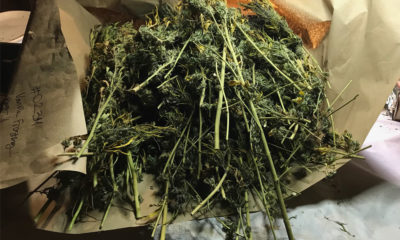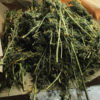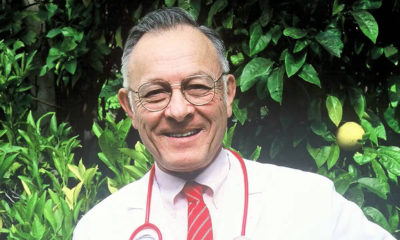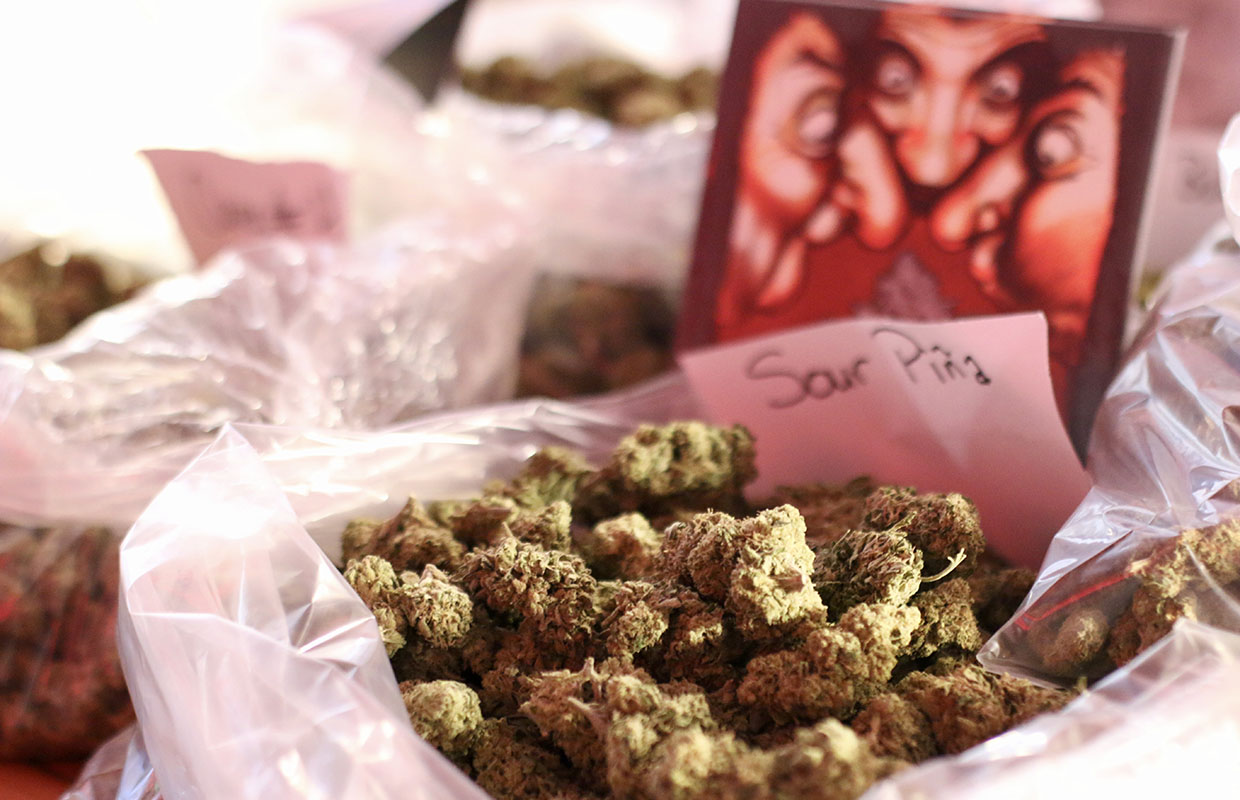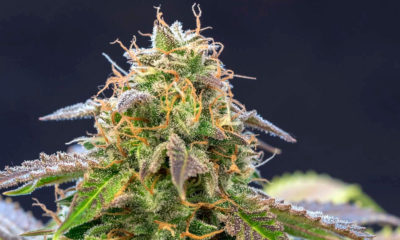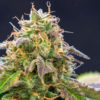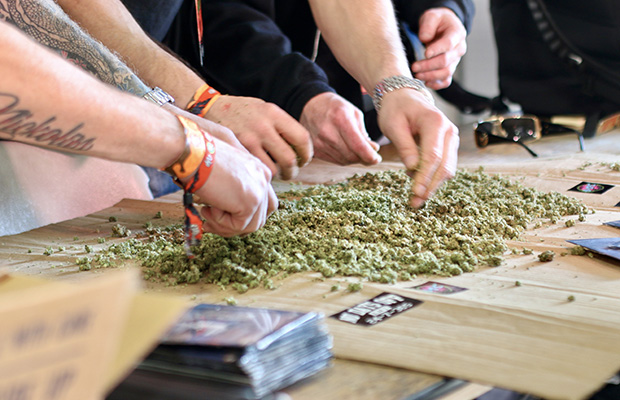
Cannabis
Santa Rosa: Emerald Cup Phoenix Rising
This year’s Emerald Cup highlighted a community recovering from the October NorCal fires, as well as the sustainable growers both apprehensive of and excited for 2018.
I’m not the type of person who typically eats in chain restaurants. But last year, after the bacchanal celebration of California’s outdoor organic cannabis that is The Emerald Cup, myself and my husband Milos found ourselves walking across the street from our Santa Rosa hotel and sitting down for multiple courses at Applebee’s. I was so stoned off of the world’s best cannabis I even ordered dessert.
When it came time for the 2017 event held this past weekend, we joked that we would visit Applebee’s again, but much has changed for the small Santa Rosa community in the two months since a deadly firestorm ripped through the streets in the early morning hours of Oct. 9.
When we arrived our hotel this year, it was surrounded by rubble. The still-standing Taco Bell across the street had an eerie “CLOSED” message spelled on its windows in blue painter’s tape, the pumps at the gas station were torched and blackened, a small hotel pool next door was still filled with ashen debris, and a pile of twisted metal was all that was left of Applebee’s. Our hotel was located along Highway 101 about three blocks from the residential area of Coffey Park, less than five miles from the Sonoma County Fairgrounds, and is lucky to still be standing.
At this year’s cup, California Growers Association Executive Director Hezekiah Allen took to the stage and estimated that 70 folks in the cannabis community lost almost everything but their lives in the fire two months ago. While the longtime players within the heartland of California cannabis are used to setbacks of various kinds, the fire is a huge blow and the CGA estimates the recovery costs at $3.7 million. The organization has already raised $200,000 towards the effort and The Emerald Cup also turned over the donations gathered at this year’s event into the capable hands of the CGA.
The October disaster displaced thousands in Santa Rosa and destroyed 3,000 homes, five percent of the city’s total housing stock. The Los Angeles Times reports that cleaning the debris alone could last until early 2018, a particularly auspicious timeline for cannabis farmers in the region as it coincides with the Jan. 1 date when retail cannabis shopping comes to California — which also just so happens to be one of the most revered cannabis producing regions the world over.
On the roads to the cup held at the fairgrounds, handmade signs thanked firefighters and first responders. At the event itself, a huge art piece of a phoenix rising from flames with a golden chalice at its center stood tall against the skies above the two-day festival, skies filled with smoke that traveled more than 400 miles from the December wildfires in Los Angeles and San Diego.
This is the state of cannabis in the Golden State. A 2017 award-winning grower was arrested on his way to this year’s gathering, a helicopter deployed small parachutes of ganja from the sky and countless pounds of premium bud was bought and sold at heavily-discounted prices within a consumption area open to only medical marijuana patients for likely the final time. Like the branches of the plants themselves, the California cannabis industry is wildly pulling in many directions all at once. Events like The Emerald Cup are helping to ensure those bud-laden branches bend towards the sun.
Growers at the Center
When I meet Mean Gene, one of the world’s top creators of undeniably beautiful cannabis strains, he introduces himself as Jackson and tells me he can’t even sample all the cannabis he creates, let alone judge a flower cup with over 400 entries. His booth for Freeborn Selections is near the back of the medical-marijuana-patient-only “215 Zone,” named after Proposition 215, which brought medical cannabis to the state in 1996. Mean Gene jokes on his Instagram account that you can’t miss his booth because it’s directly behind the boat. And his directions are helpful for navigating the massive event that spans across the fairgrounds; directly behind his booth area there’s a pretty un-missable, life-sized sea vessel. I spot a person on the boat, taking a photo while holding the wheel in one hand and about an ounce of bud in plastic bag in the other. The extravagance and flash of the new cannabis company’s debut is interesting in such close quarters with Freeborn’s “deli board” of handwritten prices and selections — $30 suggested donations for eighths of strains such as Sky Cherry, Tangerine Mojito, Blue Cheese and Black Lime.
“I can even try all the plants I grow,” Mean Gene says, in regards to judging The Emerald Cup. His knowledge of the base makeup of each plant allows him to categorize and create new strains without even tasting them all himself. “It’s like a cup of your own operation.”
Mean Gene is based in Humboldt, an area not directly affected by any of the various fires that occurred in Northern California this fall. But this doesn’t mean he is a stranger to the panicked moments of getting children and prized possessions frantically into a vehicle and out of the path of extreme danger.
“We generally get a scare,” he says of the past decade living in rural Humboldt County.
When I ask the esteemed cannabis breeder about the fires earlier this year, he describes putting out a blaze caused by downed power lines near his mom’s house this August. His buddy, he says, lost everything to the fire in Potter Valley. And because Mean Gene is the archivist of some prized cannabis genetics, I concernedly ask if he has the seeds stowed away for safe keeping.
“You have to keep them in multiple locations,” he says, comparing the lost of seeds to a wholly different industry in talking about the need to pull from pug genetics to restore the bulldog breed. “If it can happen with dogs, it can happen with a plant. There’s people who lose their strains because of a landlord, not even the cops.”
Judging The Emerald Cup is a lot of work, he says. For example, Chemdawg OG has been debated for two decades, over which of its two offshoots, Chem 91 and Chem D, produce a better result.
“It’s been 20 years and there’s only two plants and nobody knows which one’s better,” he says.
After our conversation, I wander over to a circle of festival goers lighting up and documenting a joint of Sunset Sherbet that weighs over a pound. I work my way into the crowd and take a pull from the comically sized jay. The crutch is wider than the bottom half of my face and the hit tastes mostly like campfire smoke rather than the delicate fragrant blossoms curated by a breeder with his whole life on the land.
The Love in the Air is Thicker Than Smoke
Within the consumption area of The Emerald Cup, one of the largest businesses presenting is Cannacraft, a Santa Rosa-based operation that houses multiple brands: Care by Design, Absolute Xtracts and Satori. The CannaCraft Village is filled with vendors and the operation has taken two front spots within the largest part of the 215 area.
In October, CannaCraft’s facility at the edge of Coffey Park was heavily impacted by the fire; however, the grow houses at the site, though just feet from the inferno, managed to survive. But it wasn’t the only grow CannaCraft had, and not only were they able to continue production at the make-or-break time for seasonal growers (harvest), they were also able to find space to host a Red Cross emergency headquarters out of their facility.
At this year’s cup, co-CEOs Dennis Hunter and Ned Fussell were invited to the stage to be honored for their efforts to provide for the community in the days, weeks and months following the fires.
“It’s things like this that really change our community,” Hunter said. “Every time we get this opportunity to show the community we are a compassionate people.”
Fussell said they have been given the opportunity and tools “to be the rebuild and the activation behind bringing this community back.”
“Let’s go full steam and see what we can do to bring her back,” he said.
Many different efforts are being made to get the community back on its feet. Jessica Lilga, the co-founder of Alta Supply, lives in the Coffey Park area and started a fundraiser that accepted donations “for farmers, from farmers.” Fifteen farms in Humboldt donated to the campaign, which gathered donations of full or half pounds of cannabis sold to dispensaries though Alta, with the proceeds going back to the farmers affected by the recent fires. It’s a way to bring the two cannabis communities, Humboldt and Sonoma, closer together, Lilga says, noting that the upcoming day she gives the donations to the farmers in her community will be the best day of the year.
Full Steam Ahead
When I make it over to the Swami Select booth, Swami is smoking a hefty joint of his 2016 harvest. This year’s crop, he says, is still a little “too green” for his expert palate. He should know, himself and his partner Nikki Lastreto have judged all 14 Emerald Cups together and are experts in such matters. The two share the stage together each year to announce the winners in the cup’s flower category. What makes The Emerald Cup so unique in an increasing sea of cannabis competitions across the globe is the fact that all flower entries must be grown in the most sustainable way to grow plants known to man: under the natural sun.
Just like our bodies have developed endogenous receptors equipped to bind to cannabis through a full body system known as the endocannabinoid system, the plant’s growth mirrors our own and typically falls in a nine-month cycle. This natural cycle culminates in fall, which is why growers call October “Croptober.”
The Emerald Cup started off as a growers-only gathering to share and compare the year’s harvest. With 25,000 people attending in 2017, it’s now a much larger affair, but it hasn’t shaken the core values that brought it into existence, chief among them the belief that cannabis can, and should be, a sustainable product. And while tension is high as the current industry works to comply with rules for new retail and medical marketplaces that are not yet fully formed, the Californian ethos — that desire to consume natural products purchased from responsible farmers and the idealism found in the beginnings of the marijuana movement to give back to the earth and others — remain. As multiple Emerald Cup award winner OM Edibles founder Maya said in her acceptance speech, now is not the time to focus on the negatives. Maybe California cannabis can make this major transition gracefully, maybe it is easy and maybe there is space for all.
TELL US, what positives of the California cannabis industry are you focusing on?



